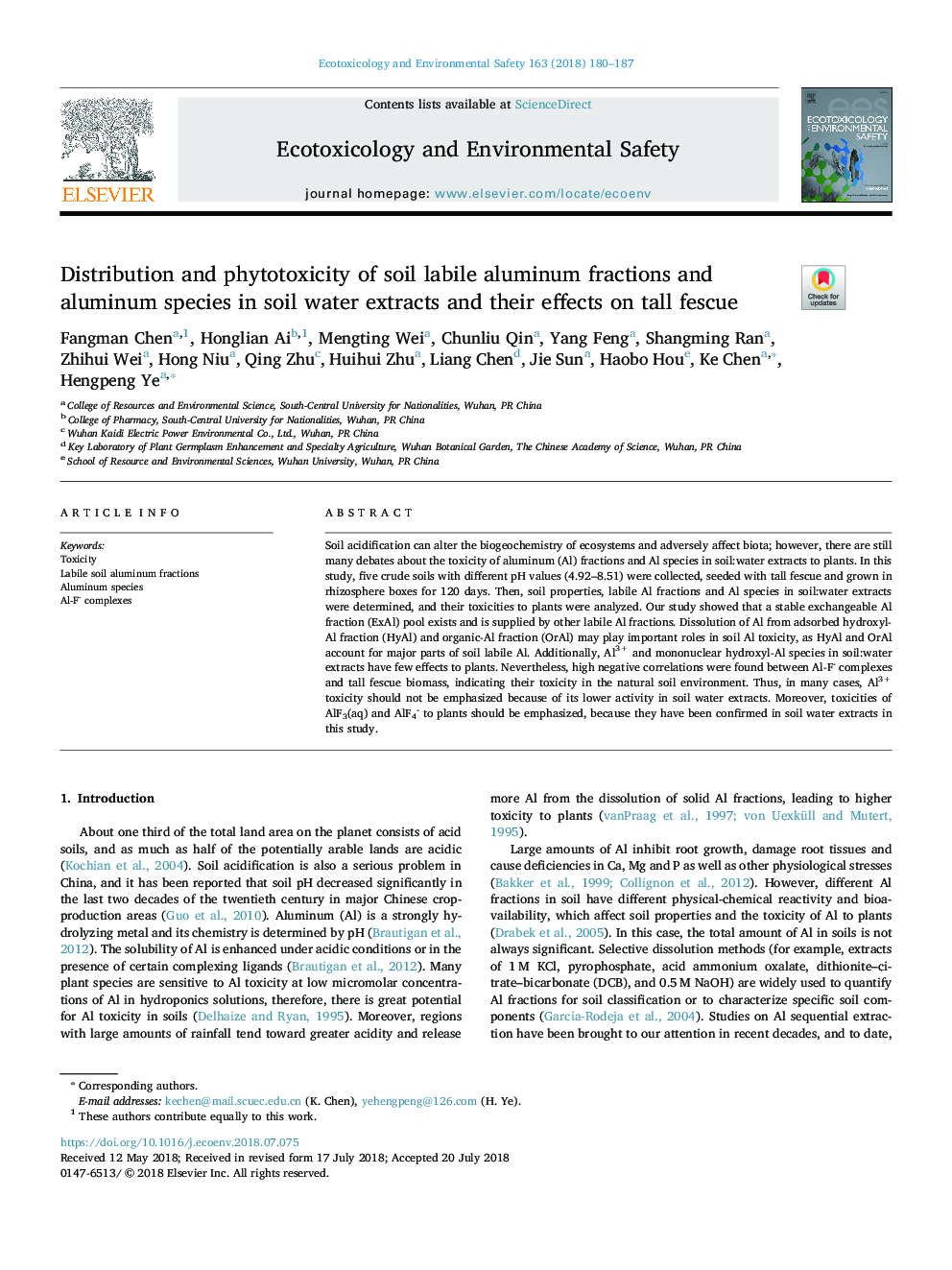| Article ID | Journal | Published Year | Pages | File Type |
|---|---|---|---|---|
| 8853065 | Ecotoxicology and Environmental Safety | 2018 | 8 Pages |
Abstract
Soil acidification can alter the biogeochemistry of ecosystems and adversely affect biota; however, there are still many debates about the toxicity of aluminum (Al) fractions and Al species in soil:water extracts to plants. In this study, five crude soils with different pH values (4.92-8.51) were collected, seeded with tall fescue and grown in rhizosphere boxes for 120 days. Then, soil properties, labile Al fractions and Al species in soil:water extracts were determined, and their toxicities to plants were analyzed. Our study showed that a stable exchangeable Al fraction (ExAl) pool exists and is supplied by other labile Al fractions. Dissolution of Al from adsorbed hydroxyl-Al fraction (HyAl) and organic-Al fraction (OrAl) may play important roles in soil Al toxicity, as HyAl and OrAl account for major parts of soil labile Al. Additionally, Al3+ and mononuclear hydroxyl-Al species in soil:water extracts have few effects to plants. Nevertheless, high negative correlations were found between Al-F- complexes and tall fescue biomass, indicating their toxicity in the natural soil environment. Thus, in many cases, Al3+ toxicity should not be emphasized because of its lower activity in soil water extracts. Moreover, toxicities of AlF3(aq) and AlF4- to plants should be emphasized, because they have been confirmed in soil water extracts in this study.
Keywords
Related Topics
Life Sciences
Environmental Science
Environmental Chemistry
Authors
Fangman Chen, Honglian Ai, Mengting Wei, Chunliu Qin, Yang Feng, Shangming Ran, Zhihui Wei, Hong Niu, Qing Zhu, Huihui Zhu, Liang Chen, Jie Sun, Haobo Hou, Ke Chen, Hengpeng Ye,
